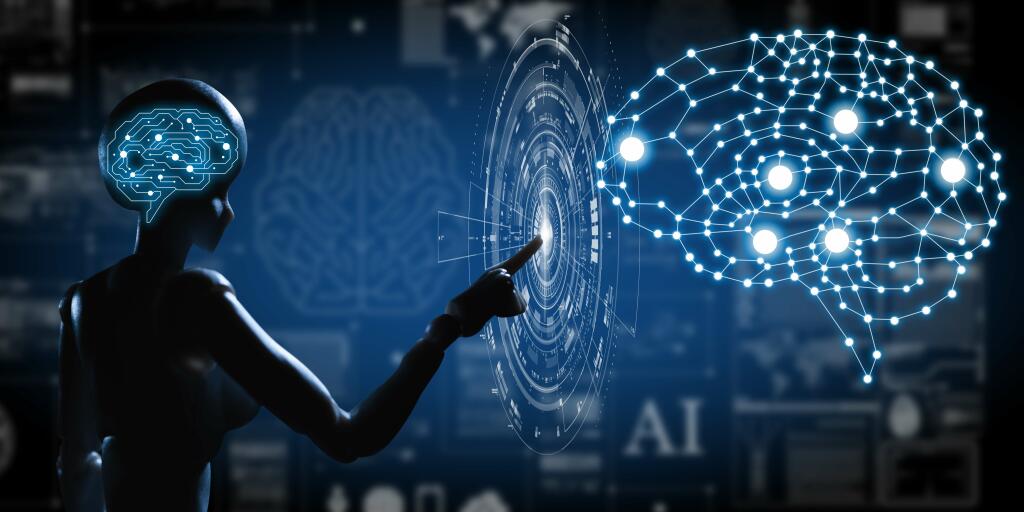Contents
Get instant access to breaking news, in-depth reviews and helpful tips. Considering the difficulty of doing what we’ve seen HoloLens do, understanding what sensors are on the device has been a subject of much interest. VR enthusiasts have certainly encountered the term interpupillary distance , which is, simply put, the distance between your pupils. This distance is different for everyone, and that’s problematic in VR and AR. You have to have a way to mechanically adjust for IPD, or the visuals don’t work very well.
It’s still a challenge for the HoloLens and other head-mounted augmented reality devices to cover your entire eye as you move your pupil around. It could take years before this field of view greatly improves, but this is just the first generation. The magic of HoloLens is a combination of see-through holographic lenses, an array of sensors, and the processing required to understand your gestures, gaze, voice, and the environment around you.
I’ve used the HoloLens three times now, and I’m convinced this latest version has sharper text rendering. Amiga couldn’t comment on exactly what Microsoft has improved over the past year, but a combination of hardware and software tweaks have definitely made holograms crisper. The holographic lenses are also the source of some HoloLens complaints. The device has a limited field of view, and it’s an optical limitation that won’t change much, if at all, by the time this ships to actual consumers. Microsoft is using a transparent display, and holograms need to be projected into your eyes.

Instead, it lets you comfortably use simple 2D apps, without taking your smartphone out of the pocket. Google Glass is much more like a smartwatch, since it has very similar functionality, although it’s not a watch, but glasses. Some people wonder what is it like to use Microsoft HoloLens. Well, using this mixed reality headset is like working with holographic interfaces in the scientific movie. ”The reality is fit kids, adults, men, women, and different ethnicities around the world.
What’s the Difference Between Microsoft Hololens, Oculus Rift and Google Glass?
If the latter, is the plane fixed in space, or can it be focused at different depths? I was hoping it had a light field projector, but it sounds like the image is just 2D. Microsoft HoloLens is a virtual reality headset with transparent lenses for an augmented reality experience.
The front of the unit houses many of the sensors and related hardware, including the processors, cameras and projection lenses. The visor is tinted; enclosed in the visor piece is a pair of transparent combiner lenses, in which the projected images are displayed in the lower half. The HoloLens must be calibrated to the interpupillary distance , or accustomed vision of the user. The sensor bar on the HoloLens comprises four “environment understanding cameras,” two on each side; a depth camera; an ambient light sensor; and a 2MP photo/HD video camera. Some of these are off-the-shelf parts, whereas Microsoft custom-built others.

This is just the beginning for HoloLens, and Microsoft is hoping it’s the future. When I tried Microsoft’s HoloLens headset last year, security guards lined the walls of a hotel, and I had to stash all my belongings in a locker before I even set foot near it. Microsoft was petrified someone would take a photo of the device and deconstruct it to help rival companies catch up.
Is Technology Taking Over Our Lives?
The hardware we have now […] the field of view isn’t exactly final, but I wouldn’t say it’s going to be […] hugely, noticeably different, either. 3D applications, or “holographic” applications, use Windows Holographic APIs. Microsoft recommends Unity engine and Vuforia to create 3D apps for HoloLens, but it’s also possible for a developer to build their own engine using DirectX and Windows APIs.
It’s designed for people who work with their hands and find it difficult to integrate a computer or smartphone into their daily work. Kipman wants to replace the grease-stained Windows 2000 computer sitting in the corner of the workroom. It’s pretty much the same decision Google made for Google Glass.

Microsoft is overlaying images and objects onto our living rooms. Instead of everyone walking into a room made to reproduce 3D images, Microsoft’s goggles show images only the wearer can see. Everyone else will just think you’re wearing goofy-looking glasses. Technology companies have long promised to bring us the future now, reaching ahead 5 or 10 years to try to amaze consumers with the next big breakthrough. Hollywood, on the other hand, has shown that tech in action . These days users are prone to enjoy light effects, detailed materials, models, animation, and movements, which makes them feel the content.
Is this Microsoft’s ChatGPT-powered Bing?
It’s not delivering the lower-power chips that mobile devices demand. Intel even reportedly had to lobby Microsoft to keep the Surface Go on its chips. Microsoft had to create an entirely new etching system for the waveguides. It had to figure out how to direct light to the right place in the waveguides nearly photon by photon. “We are simulating every photon that comes from the laser,” Alam says. The light from the lasers isn’t just reflected; it’s split apart in multiple colors and through multiple “pupils” in the display system and then “reconstituted” into the right spot on the waveguides.
- Cody Cochran is the cofounder of Azoth LLC, an Ann Arbor, Michigan-based organization that focuses on combined traditional manufacturing quality with the efficiencies of rapid prototyping.
- Spice up your small talk with the latest tech news, products and reviews.
- So, you’d be talking about something like Intel’s Project Alloy, which is a VR-type HMD + cameras.
When they aren’t, consumers feel a form of motion sickness. There’s a whole bunch of other hardware that’s designed to help the HoloLens’ effects feel believable. The device has a plethora of sensors to sense your movements in a room and it uses this information along with layers of colored How to Scale a Web Application 8 Best Ways glass to create images you can interact with or investigate from different angles. Want to see the back of a virtual bike in the middle of your kitchen? The goggles will track your movements, watch your gaze and transform what you see by blasting light at your eyes (it doesn’t hurt).
In addition to an Intel Cherry Trail SoC containing the CPU and GPU, HoloLens features a custom-made Microsoft Holographic Processing Unit , a coprocessor manufactured specifically for the HoloLens by Microsoft. The SoC and the HPU each have 1GB LPDDR3 and share 8MB SRAM, with https://forexaggregator.com/ the SoC also controlling 64GB eMMC and running the Windows 10 operating system. The HPU uses 28 custom DSPs from Tensilica to process and integrate data from the sensors, as well as handling tasks such as spatial mapping, gesture recognition, and voice and speech recognition.
He explained how Microsoft experimented with different designs and materials, ultimately landing on carbon fiber to save weight. Just increase the angle of the mirrors that reflect the laser light. The lasers in the HoloLens 2 shine into a set of mirrors that oscillate as quickly as 54,000 cycles per second so the reflected light can paint a display. Those two pieces together form the basis of a microelectromechanical system display. That’s all tricky to make, but the really tricky part for a MEMS display is getting the image that it paints into your eyeball. Microsoft shared some of the broader details when it announced the device in January.
Quick fixes: how to transfer iPhone videos to a Windows PC when it keeps disconnecting
The goggles also have a camera that looks at the room, so the HoloLens knows where tables, chairs and other objects are. It then uses that information to project 3D images on top of and even inside them — place virtual dynamite on your desk and you might blow a hole to see what’s inside. Microsoft’s HoloLens, which the company unveiled at its Redmond, Wash., headquarters on Wednesday, is a sleek, flashy headset with transparent lenses. You can see the world around you, but suddenly that world is transformed — with 3D objects floating in midair, virtual screens on the wall and your living room covered in virtual characters running amok.
Microsoft says the final version will automatically measure the distnace between your eyes, but the prototypes don’t have that feature yet. That means very little pressure on your nose, and even if you’re wearing glasses you can generally find a workable way to keep them on underneath. As soon as additional devices are available, more accepted applicants will be invited to purchase. Microsoft Visual Studio is an IDE that can be used to develop applications for HoloLens. Applications can be tested using HoloLens emulator or HoloLens Development Edition.
Solving that requires more than just GPS location and object recognition. Kipman talks a lot about distinguishing between identically boring conference rooms that are in the same spot on different floors. Tracking objects in space using optics is famously difficult. Walk in a circle around a building, and your position will drift, so the computer won’t put your ending point at the starting point.
Now, after the technology giant’s big BUILD developer conference, we know even more about the ins and outs of this wonderfully weirdo piece of tech. In November 2018 Microsoft got a contract for the supply of 100,000 HoloLens MR glasses, worth US$479 million, to the U.S. military. They demanded that corporate management terminate the contract. “Sonic Ether” and Nvidia VXGI and Cryengine are close to cracking realtime global illumination (ie. no baked lighting, all lighting, shadowing, light bouncing calculated and rendered in realtime (90fps-160fps?)). VRAM especially with HBM2 means 8K and 16K textures are not too far away. Cinematic post-processing and sophisticated shaders are coming along too.
I used the HoloLens to video chat with a Microsoft employee who was using Skype on a tablet. She accessed a camera on the HoloLens to see through my eyes, then she drew diagrams and arrows where I was looking to show me what tools to pick up and how to use them. With Skype video chatting, HoloLens users can let others see through their eyes to help with tasks and even doodle right on top of your line of vision. The company is not trying to transport you to a different world, but rather bring the wonders of a computer directly to the one you’re living in.
There are three separate batteries on each side of the HoloLens, but Microsoft isn’t revealing their exact capacity yet. They look like little battery packs you might use inside a toy, and they’re small enough to fit in the sides of the HoloLens. They also act as a way to balance out the weight of the HoloLens so it doesn’t feel too heavy at the front or rear. The headset should run for around two or three hours before it needs to be recharged via Micro USB. There are a couple of key ingredients to taking a head-mounted computer-hat and turning it into an effective hologram machine, the first of which is getting those images in front of your eyes.
